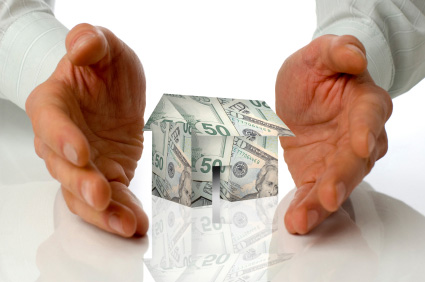What are the different types of home insurance deductible?
By Kathryn Hawkins
In most cases, your insurance deductible refers to the dollar value you’ll pay out of pocket before your insurance company covers the rest of the money for a claim. For example, if you have a $500 auto insurance deductible, that’s the amount you’ll be expected to pay if you’re found to be at fault in a car accident before your insurer will cover the remainder of costs for the claim.
But when it comes to homeowner’s insurance, it’s not always quite that simple.
 Homeowner’s insurance policies can have three different types of deductibles:
Homeowner’s insurance policies can have three different types of deductibles:
- The typical dollar-value flat rate) deductible.
- A percentage-based deductible that is based on the insured value of your home.
- A split deductible, which uses a dollar-value deductible in most cases but switches to a percentage-based deductibles for particular scenarios, such as hurricane-related damage.
Percentage-based deductibles are often considerably higher than flat-rate home insurance deductibles. Commonly, homeowner’s insurance deductibles fall between $1,000 and $2,500 for dollar value-based claims, and may be as high as 5 percent of a home’s insured value for policies that are percentage-based. That means that for a home with an insured value of $500,000, the homeowner may have to pay as much as $25,000 before an insurer will pay for additional repairs.
How do home deductibles work?
There are some home insurance policies that only use a dollar-value deductible, no matter what the situation. There are some that only use a percentage-based deductible. But some insurers primarily use dollar-based deductibles, and only switch to percentage-based deductibles in particular situations.
“In addition to standard home deductibles, some policies may have what are called split deductibles,” says Eric Stauffer, owner of ExpertInsuranceReviews.com. That means a higher deductible which may be percentage-based even if the general deductible is a flat fee) can apply in specific situations relating to the hazards that your home is vulnerable to. “A home located in an area that has frequent, severe hailstorms, for example, may have a specific deductible amount for hail-related damage that is different from other perils,” Stauffer says.
“The percentage-type deductibles are generally reserved for catastrophic losses or other large losses that are relatively common,” says Kristofer Kirchen, president of Advanced Insurance Managers in Tampa, Florida. In Florida, for instance, many insurers write policies that include a separate percentage-based deductible for hurricane coverage, in which deductibles start at 2 percent of the insured value of the home, and can be as high as 10 percent.
How should you choose a deductible?
When it comes to choosing a deductible for your homeowner’s insurance coverage, plan to choose the highest deductible level that you can comfortably afford. That will help you keep your premiums low. Choosing the lowest possible deductible is likely to cost you considerably more over the long run, as chances are low that you will need to file a claim on a year-to-year basis.
“Raising your home deductible from $500 to $2,500, for example, can save you $300 a year,” Stauffer says. “On average, a homeowner experiences a loss every 20 years, so that would mean a savings of $6,000 in premiums over that time period.”
However, this may not be the case if you have a percentage-based deductible. Because percentage deductible amounts can fall between 2 and 10 percent or more of the home’s insured value, you could be liable for tens or even hundreds of thousands of dollars before your insurer will pay out.
In this scenario, “most people opt for the 2 percent deductible because they don’t have the money to cover the higher deductibles and, after a hurricane loss, the last thing you need to be worrying about is money,” Kirchen says.
How to save money on your home insurance
If your home suffers damage, you’ll need to make sure you can afford to pay your deductible. The first step is to make sure you’re not paying more than you should.
Take a look at the monetary amount of coverage offered by your policy. Does it factor in the value of the land your house is on? If so, you may be paying more than you should, as the land your house is built on is not at risk of the same perils, according to the Federal Citizen Information Center. In this case, you should talk with your insurance agent about reducing the replacement value, and subsequently lowering your premiums and percentage-based deductibles.
You can also save money on premiums by bundling different policies with the same insurer. For example, if you have a homeowner’s policy, two auto insurance policies and a business policy, you can save as much as 15 percent by purchasing them all through the same company, says the FCIC.
If the worst happens and you do need to pay out a high percentage-based deductible on a homeowner’s insurance claim, you may need to get creative when it comes to coming up with the deductible amount.
Kirchen says that financing options to cover the cost of home repairs in such a situation might include home equity loans, signature loans, collateralized loans, courtesy checks, or pawning or selling unneeded possessions. You can also choose contractors who are willing to accept credit cards or payment plans.
But in order to avoid finding yourself in such a situation, the best strategy is to avoid choosing a deductible amount that’s higher than you can afford to pay.
See how much you could save today on your home insurance. Get your free home insurance quotes today!
